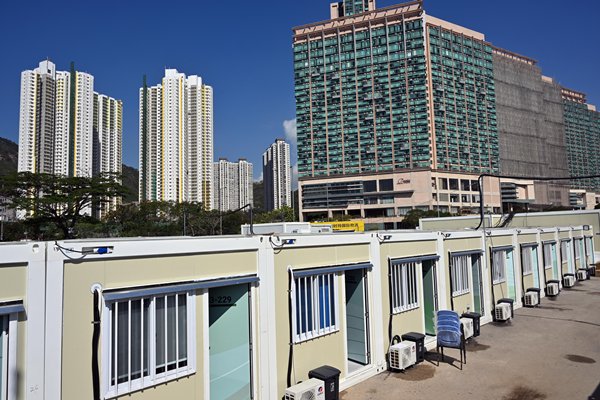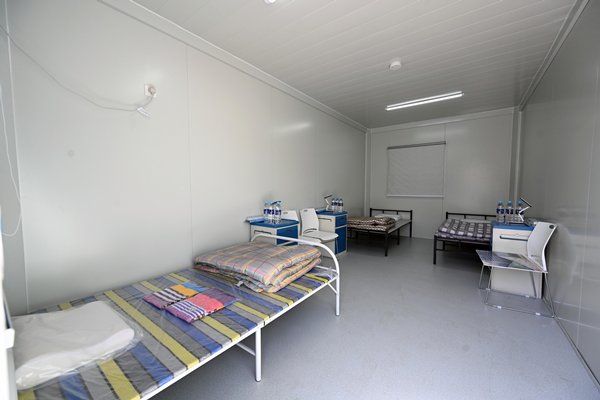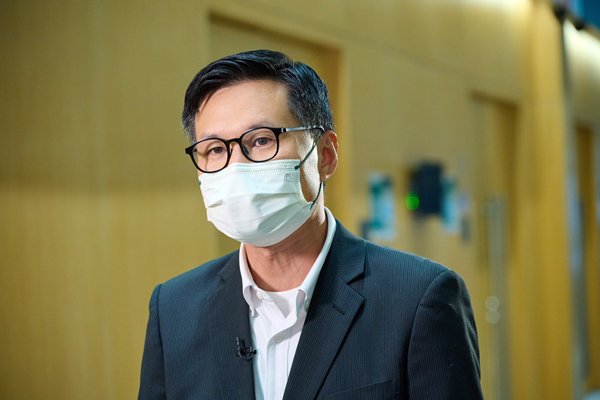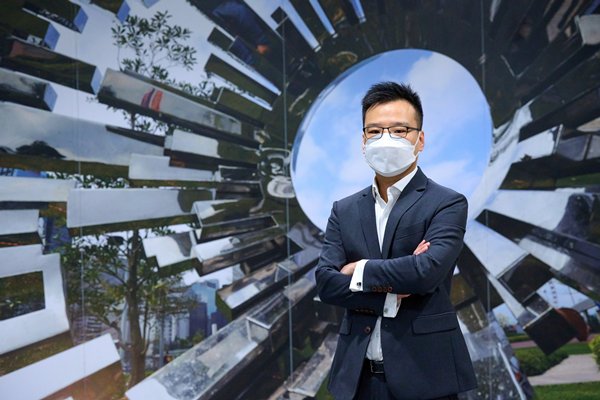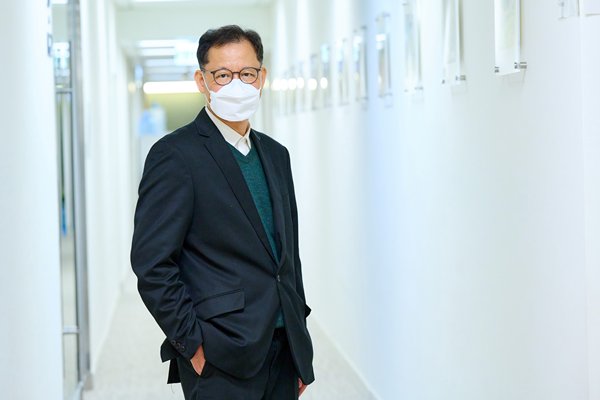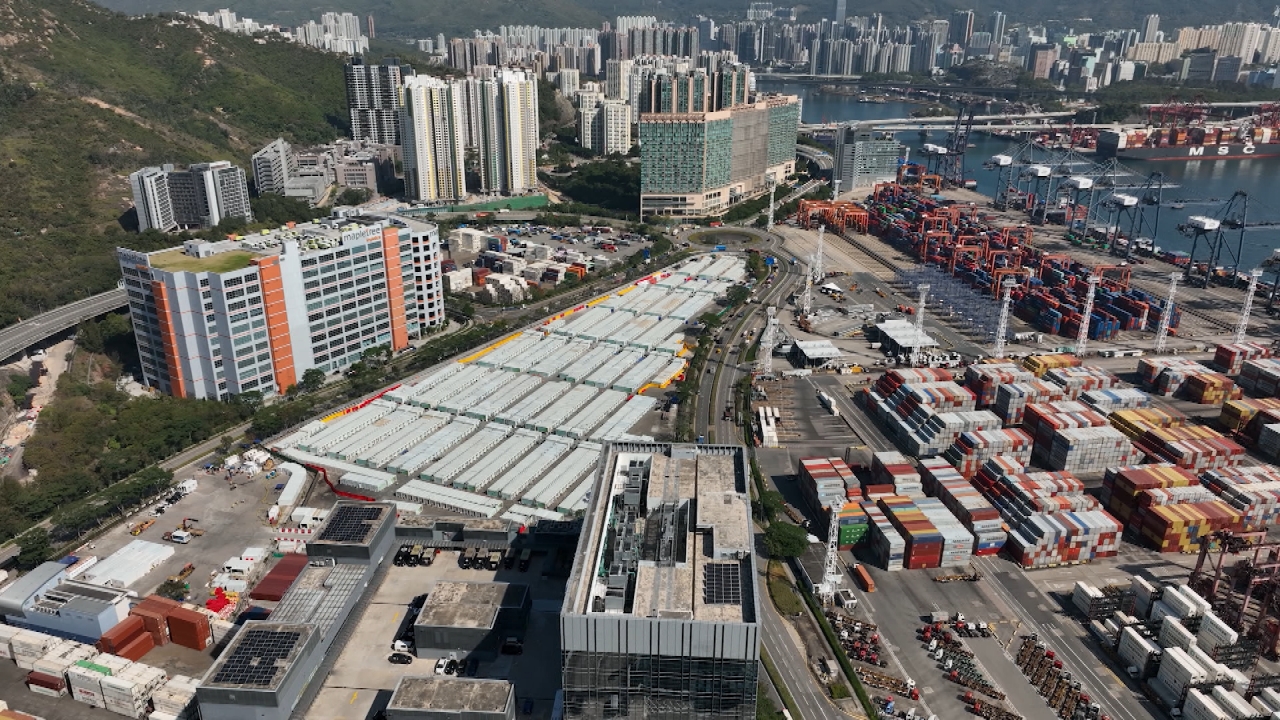Rush to save lives
The fifth wave of the COVID-19 outbreak revealed the urgent need for more isolation facilities. To solve this problem, the Development Bureau created a task force responsible for co-ordinating with other parties - such as construction teams and public utilities - to ensure isolation facilities were built in time to cope with the increasing number of patients.
Timely completion
The task force was formed by different works departments and each had their own contribution to make. With everyone working round the clock, the task force was able to identify eight sites for the construction of new community isolation facilities. Preparation and construction work started right away.
The community isolation facility in Tsing Yi, which provides around 3,900 beds for emergency isolation, took only seven days to build and began operations on March 1.
Team work
The Architectural Services Department deployed multiple teams to facilitate construction work. Senior Architect Peter Lau participated in the Tsing Yi project. He said time was limited, but by effectively communicating the urgency of the task to all parties, they were able to deal with the constraints on labour and materials due to the tight construction time and provide timely solutions.
“I think the spirit of mutual help among departments and the construction team was also essential for this fast-track project.”
Fast response
On the subject of teamwork, the Civil Engineering & Development Department had a big role to play. It worked with other government departments, contractors and utilities to provide essential infrastructure to support the community isolation facility in Tsing Yi. It also offered immediate assistance and support on relevant issues.
For example, after construction kicked off, there was not enough space for work. The department came up with a temporary plan to close two nearby traffic lanes to serve as a temporary working area.
“It only took one day from concept development to obtaining approval,” said Civil Engineering & Development Department Senior Engineer Tim Lam. “The inter-departmental efforts of various professional teams as well as the concerted efforts of the contractors and the utility undertakings, all these have enabled us to complete the infrastructure works in a very short period of time.”
Accurate calculation
To accommodate nearly 4,000 patients, the sewerage capacity had to increase. The Drainage Services Department finished constructing a 300mm diameter sewage pipe within a week, compared with the normal period of three weeks.
Carrying out underground work was not any easier given the pipeline network was already complex. The department’s senior engineer Leung Kwong-chung shared an “almost pipeline crash” story - when the project was coming to its end, they discovered the proposed sewage pipe might clash with the existing water mains pipe.
“We immediately contacted our colleagues in the Water Supplies Department. In case they did indeed clash with each other, then the Water Supplies Department colleagues would stand by and carry out the water pipe diversion immediately.”
Luckily, after a more accurate site survey, the sewer was able to pass over the water pipe and construction was completed on time.
Close co-operation
Strong co-operation within the task force shortened construction time by a considerable amount. But support from public utility firms was also essential.
Development Bureau Assistant Secretary (Programme Management) Tommy Cheung said in order to ensure power supply at the facility, they contacted the power company at the beginning of the construction project.
“Upon receiving our requests, the power company immediately arranged cable laying and other relevant work so as to ensure power could be provided upon the completion of the isolation facilities.”
Mr Cheung said they also contacted telecoms providers to carry out corresponding work to enhance the network coverage in some remote areas.
Public utilities also supported the construction of community isolation and treatment facilities in the Lok Ma Chau Loop. For example, the gas company finished building gas pipelines for the makeshift hospital in just four days.
Besides looking for land for the construction of isolation facilities, the Development Bureau also needed to provide temporary storage space for contractors. Mr Cheung noted that various work departments offered the available vacant land from their own construction projects. The bureau’s Planning & Lands Branch and the Lands Department also offered a helping hand. All this ensured a smooth and efficient construction process.
